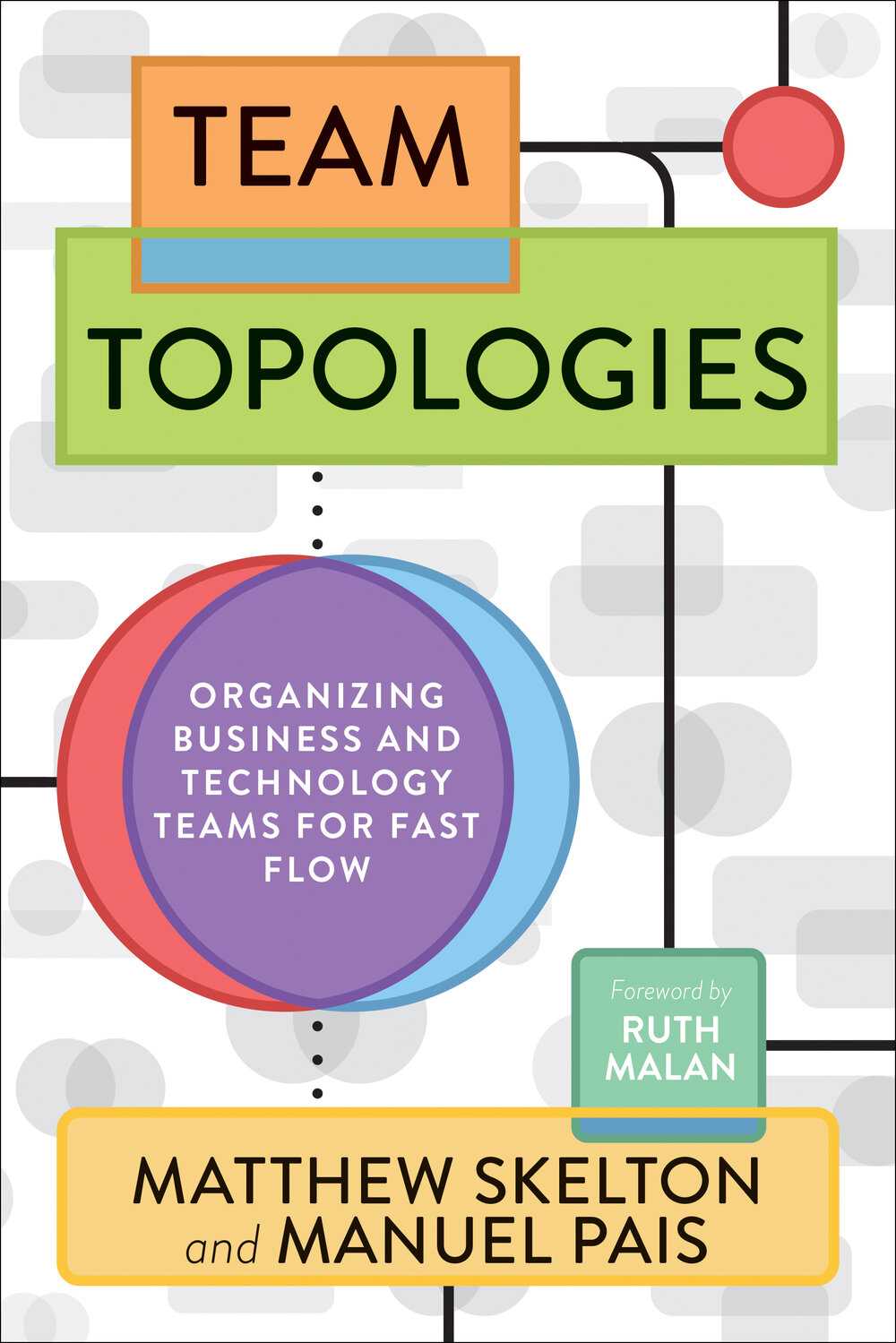Org Charts do not reflect the actual creation of value. Traditional Org Charts are static and are often aligned or functions or large business areas. The problem is that our world is changing faster and faster, and our Org Charts simply can't keep up.
Systems Thinking recognizes that structure plays an outsized role in informing the patterns of behavior of the people in it. Moreover, Conway's Law and the emerging science of SocioTechnical Systems suggests that when Org Design and Software Architecture conflict, Org Design wins.
As software organizations search for ways to deliver new services to market quickly and iterate frequently, they are often stymied by delays and dependencies introduced by the underlying system design.
In Team Typologies, Matthew Skelton and Manuel Pais detail an approach plus useful patterns for software development organizations moving from a siloed org chart, to value-oriented system, to ultimately a dynamic evolving system.
Foundations: Decoupling & Humanism
Modern software development philosophy elevates transparency, inclusivity, and group engagement as a way to empower teams to take action. However, sending more information into the system is not without its cost or limit.
Dunbar's Number are conventional limits of Cognitive Load a group can handle effectively. It suggests that people have a limited capacity to perceive, interpret, and integrate information. Information that exceeds this limit reduces the effectiveness of the organization.
In addition, Conways Law suggests that our software architecture and organizational designs are linked.
The goal of building effective organizations and effective software systems are linked. SocioTechnical science is an emerging field which studies this phenomena.
Its no surprise that there is a strong movement in both the software architecture and organizational design spaces to create smaller, decoupled, fit for purpose parts of the whole. It is a reductive technique that is familiar the 20th century management mindset.
In addition, in contrast to a strict P&L org design, intended to be legible from the top down. Matthew Skelton suggests a more "Humanistic Approach", basing organizational design decisions around the actual communication needed to get the job done.
Team Typologies tips the hat to the popular new paradigm of Project to Product (P2P) that emphasizes the "flow based" organizational design model common in Lean literature.
Approach
The approach offers a good conceptual model and useful patterns to get organizations started. The organizational design journey recommended in Team Typologies offers people a place to start with tried-and-true patterns then graduates to dynamic evolutionary org structure.
This evolutionary approach is grounded solidly in complexity science, Bruce Tuckman's Stages of Group Dynamics, and McChrystal's "Team of Teams".
Central to each of the patterns and evolution of the org design is clear, explicit team responsibilities and interaction modes. As the organization evolves these responsibilities and interaction modes become more fluid but clarity and explicitness remain central to effective operation.
